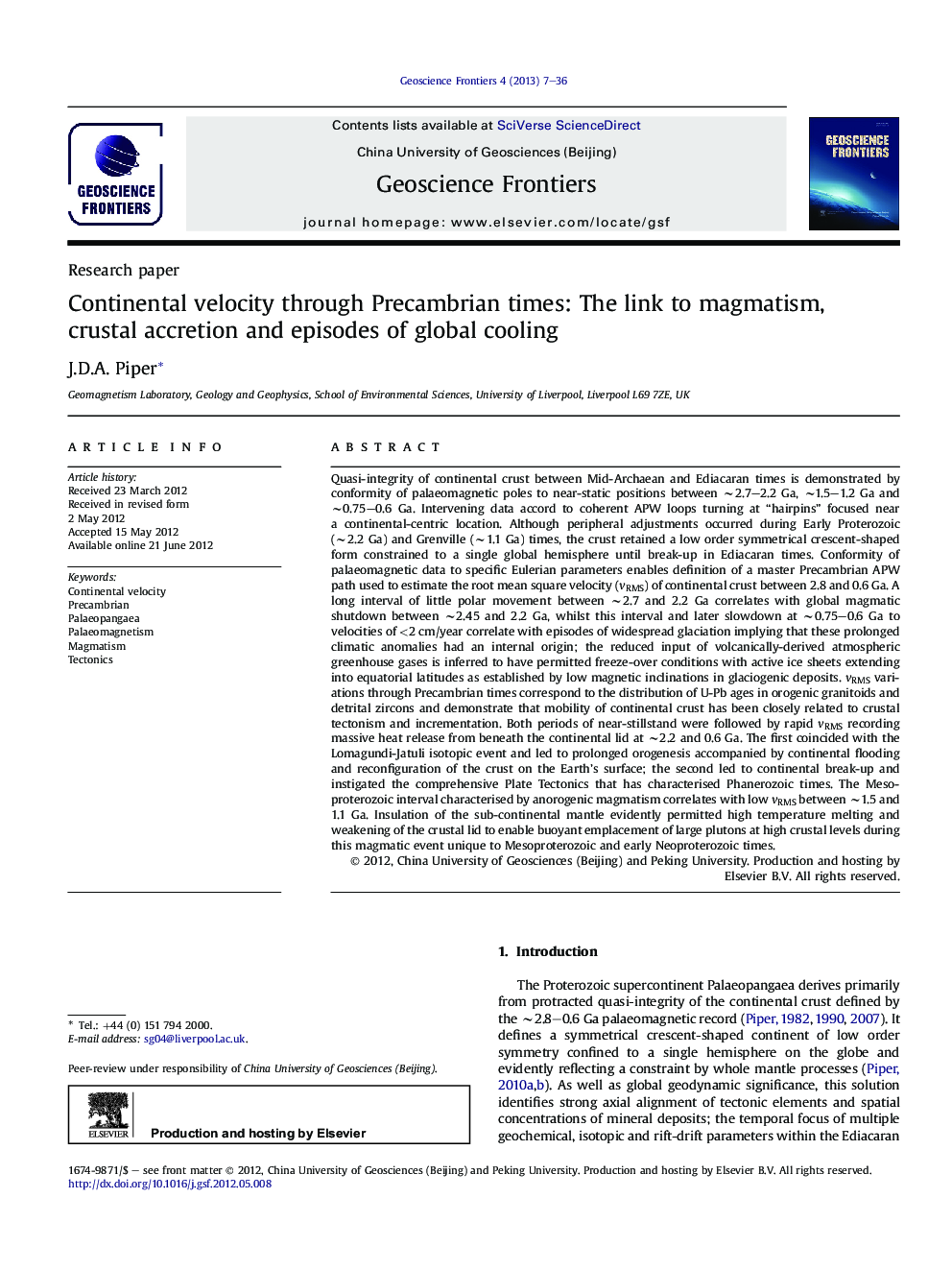| کد مقاله | کد نشریه | سال انتشار | مقاله انگلیسی | نسخه تمام متن |
|---|---|---|---|---|
| 4681861 | 1348879 | 2013 | 30 صفحه PDF | دانلود رایگان |
Quasi-integrity of continental crust between Mid-Archaean and Ediacaran times is demonstrated by conformity of palaeomagnetic poles to near-static positions between ∼2.7–2.2 Ga, ∼1.5–1.2 Ga and ∼0.75–0.6 Ga. Intervening data accord to coherent APW loops turning at “hairpins” focused near a continental-centric location. Although peripheral adjustments occurred during Early Proterozoic (∼2.2 Ga) and Grenville (∼1.1 Ga) times, the crust retained a low order symmetrical crescent-shaped form constrained to a single global hemisphere until break-up in Ediacaran times. Conformity of palaeomagnetic data to specific Eulerian parameters enables definition of a master Precambrian APW path used to estimate the root mean square velocity (vRMS) of continental crust between 2.8 and 0.6 Ga. A long interval of little polar movement between ∼2.7 and 2.2 Ga correlates with global magmatic shutdown between ∼2.45 and 2.2 Ga, whilst this interval and later slowdown at ∼0.75–0.6 Ga to velocities of <2 cm/year correlate with episodes of widespread glaciation implying that these prolonged climatic anomalies had an internal origin; the reduced input of volcanically-derived atmospheric greenhouse gases is inferred to have permitted freeze-over conditions with active ice sheets extending into equatorial latitudes as established by low magnetic inclinations in glaciogenic deposits. vRMS variations through Precambrian times correspond to the distribution of U-Pb ages in orogenic granitoids and detrital zircons and demonstrate that mobility of continental crust has been closely related to crustal tectonism and incrementation. Both periods of near-stillstand were followed by rapid vRMS recording massive heat release from beneath the continental lid at ∼2.2 and 0.6 Ga. The first coincided with the Lomagundi-Jatuli isotopic event and led to prolonged orogenesis accompanied by continental flooding and reconfiguration of the crust on the Earth's surface; the second led to continental break-up and instigated the comprehensive Plate Tectonics that has characterised Phanerozoic times. The Mesoproterozoic interval characterised by anorogenic magmatism correlates with low vRMS between ∼1.5 and 1.1 Ga. Insulation of the sub-continental mantle evidently permitted high temperature melting and weakening of the crustal lid to enable buoyant emplacement of large plutons at high crustal levels during this magmatic event unique to Mesoproterozoic and early Neoproterozoic times.
Figure optionsDownload as PowerPoint slideHighlights
► Palaeomagnetic data define quasi-integral continental crust between 2.7 and 0.6 Ga.
► Global polar data are rotated to define a master apparent polar wander path.
► This path is used to compute the root mean square velocity of the crust.
► Continental velocity variations are correlated with major geological events.
► Glaciations and magmatic shutdown occur when velocities are low.
Journal: Geoscience Frontiers - Volume 4, Issue 1, January 2013, Pages 7–36
